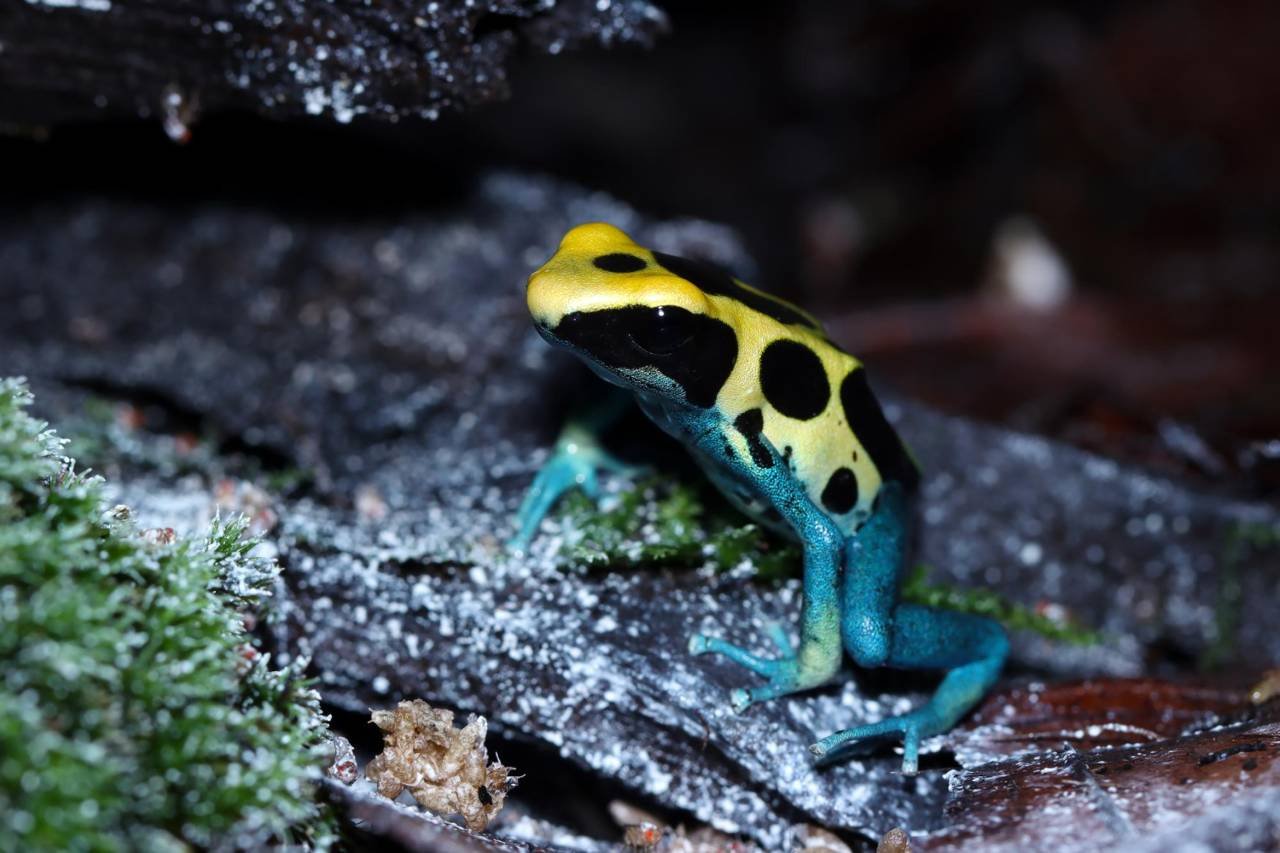The Dyeing Poison Dart Frog, scientifically known as Dendrobates tinctorius, is an exquisite amphibian that stands out for its vibrant colors and intriguing ecological role. Native to the rainforests of South America, this frog captivates not only with its beauty but also with its fascinating natural history. Let’s explore the world of the Dyeing Poison Dart Frog and uncover the secrets behind its brilliant appearance and ecological significance.
Characteristics and Appearance
The Dyeing Poison Dart Frog is famous for its striking colors, which can range from bright blues and greens to yellows and blacks, often interspersed with bold patterns. This color diversity is not only visually stunning but also serves as a warning to potential predators about the frog’s toxic nature. Adults typically measure between 1.5 to 2 inches in length.
Habitat and Distribution
These frogs are primarily found in the rainforests of French Guiana, Suriname, and northern Brazil. They thrive in humid, tropical environments, favoring locations near streams and wetland areas. The dense vegetation and moist conditions provide ideal environments for their survival and reproduction.
Toxicity and Diet
Dyeing Poison Dart Frogs are known for their toxic skin secretions, which are primarily derived from their diet in the wild. They consume alkaloid-rich insects, such as ants and mites, which contribute to their defensive toxins. When kept in captivity without these dietary sources, their toxicity levels decrease, making them safe to handle.
Reproduction and Lifecycle
During the rainy season, male Dyeing Poison Dart Frogs establish territories and use vocal calls to attract females. Once a pair is formed, the female lays eggs in a moist, protected environment. The male often protects the eggs and, upon hatching, transports the tadpoles to water-filled areas where they continue to develop.
Conservation Status
While not currently listed as endangered, Dyeing Poison Dart Frogs face threats from habitat destruction and climate change. Conservation efforts focus on habitat preservation and promoting responsible pet trade practices to protect wild populations.
FAQs About Dyeing Poison Dart Frogs
What makes the Dyeing Poison Dart Frog unique?
Its vivid coloration and pattern diversity make it stand out, and its skin toxins serve as a defense mechanism. The toxins are diet-derived, presenting a fascinating aspect of its natural history.
Where are these frogs naturally found?
They are native to the rainforests of French Guiana, Suriname, and northern Brazil, thriving in humid environments with abundant water sources.
Are Dyeing Poison Dart Frogs dangerous to humans?
In the wild, their toxin-laden skin poses potential risks if ingested or contacted open wounds. In captivity, without alkaloid-rich diets, they lack significant toxicity.
How do these frogs reproduce?
During the rainy season, males call to attract females, leading to egg-laying in moist areas. Males are often involved in tadpole transport and care.
What conservation measures are important for these frogs?
Conservation efforts include habitat protection, sustainable pet trade, and educating the public about their ecological importance and role in biodiversity.
Conclusion
The Dyeing Poison Dart Frog, with its spectacular array of colors and fascinating adaptations, represents the intricate beauty found in South America’s rainforests. Understanding and conserving these amphibians is crucial for maintaining ecological integrity and the vivid tapestry of life. For more on other intriguing dart frog species, read our articles on Phantasmal Poison Frog, Golden Poison Frog, and Strawberry Poison-Dart Frog. For a lighter touch, explore our collection of frog jokes and frog-themed stories that celebrate the whimsical world of frogs.
Image by Marcel Langthim from Pixabay
